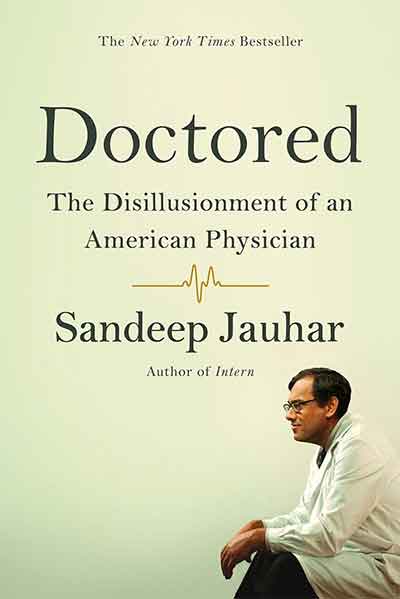
Don Fitz’s new book Cuban Health Care: The Ongoing Revolution was going to press at Monthly Review in early spring, as the pandemic was ramping up, so he had just barely enough time to slip in a postscript teasingly titled, “How Che Guevara Taught Cuba to Confront COVID-19.” The postscript puts an exclamation mark on the medical history of Cuba that Fitz takes us through in the 240 compelling pages that come before. Based on that history, one would have expected Cuba to take early, decisive actions to stem the pandemic, and Fitz says that’s exactly what happened.
The government quickly converted school-uniform factories to manufacture medical masks. They sacrificed their crucial tourism industry in order to bar all non-resident travel. They locked down hotspots, ensuring that their residents were well provisioned and that medically vulnerable people were checked frequently. They did plenty of testing and contact tracing. Medical students walked through all neighborhoods regularly, checking in on residents. All of this, Fitz writes, was no more than what Cubans would have expected of their nation in a time of such danger. He adds, “The Cuban people would not tolerate the head of the country ignoring medical advice, spouting nonsensical statements, and determining policy based on what would be most profitable for corporations.” Indeed, their pandemic response is only the latest of countless ways in which the Cuban medical system has proven superior to the US system.
The medical system that Cuba’s revolutionaries inherited from the old regime—more like a non-system—was a mess. Millions of Cubans, disproportionately rural and Black, has no access to health care at all. In the 1960s, the government began building a national system of outpatient polyclinics (policlínicos integrales) designed, in Fitz’s words, to “unify preventive and curative medicine” in communities. Each polyclinic was staffed, at a minimum, with “a general practice physician, nurse, pediatrician, OB/GYN, and social workers.” The polyclinics provided a single point of entry for each patient. They were highly successful, Fitz says, because they were established not in isolation but in the context of other developments: Cuba’s famously successful literacy campaign, land reform, improved farm incomes, improved diets, pensions, improved water supplies, schools, and housing, along with others. Having status within the national system equal to that of the country’s major hospitals, polyclinics had a high degree of independence. In the mid-1970s, the polyclinics began doing health risk assessments, incorporated specialist care, and made house calls a major part of the system. A decade later, single doctor-nurse teams began establishing small neighborhood consultarios, each tied to a polyclinic.
Internationally, Cuba’s health professionals are most well-known for their numerous, extensive missions to provide medical care and training in underserved or war-torn regions. The international work began in 1962 with a mission to Algeria, followed by other African nations, but it really ramped up with Cuba’s involvement in the Angola war that began in 1975 and dragged on into the 1980s. Fitz provides a richly detailed story of Cuban troops’ support for the Angolans’ fight against U.S.- and apartheid South Africa-supported rebels backed by South African mercenaries. The number of Cuban fighters in Angola reached a peak of 36,000 in 1976. Between 1975 and 1991, Cuba also sent more than 43,000 aid workers; among them, the number of Cuban medical workers in the country at any given time was as high as 800. Fitz relates some fascinating personal stories of doctors who served in the country, some of them for years. Cuban medical missions remained in Angola until 1991.
The Angola mission is the most celebrated, but Cuba’s service to Africa was far more widespread. Fitz list two dozen of the continent’s countries who collectively hosted tens of thousands of Cuban aid missions, primarily medical. They spanned the continent and the alphabet, from Benin to Guinea-Bissau to Mali to Uganda to Zambia. In the 1970s and 1980s, Cuban doctors also went to serve the revolutions in Nicaragua and Grenada. In the wake of the 1986 Chernobyl nuclear disaster in Ukraine, the Cuban government flew in 25,000 victims, mostly children, for treatment. In all, 164,000 medical professionals have served in 154 countries. Cuba provided medical teams in the wake of Hurricane Mitch, which hit Central America in 1999, the 2010 Haiti earthquake, and other disasters. They assembled a team to go to the US after Hurricane Katrina in 2005, but George W. Bush rejected the offer.
Fitz relates the Cuban medical system’s long struggle with HIV/AIDS. The disease had become serious on the island by 1986, but its cause still mysterious enough that the health system began sending AIDS patients to be quarantined in a network of sanitoria previously established for patients with highly infective diseases. Most of the quarantined were soldiers returning from Africa, so there was little notice within Cuba. The United States, always on the lookout for a club to beat Castro with, denounced Cuba for abusing the human rights of gay men. In fact, the majority of infected troops were heterosexual. The quarantine was lifted in 1989, once the disease became better understood. Cuba eventually made good progress on AIDS. The medical journal The Lancet declared Cuba’s AIDS program “among the most effective in the world.” But Cuba’s enemies continued to throw out the anti-gay trope, Fitz believes, “to distract attention from the fact that Cuba had implemented a program to combat HIV/AIDS that was better than most countries’, and, in particular, superior to US efforts.”
Fitz discusses how the collapse of the Soviet Union—which, combined with the continuing US embargo, ushered in the severe economic stresses of Cuba’s “Special Period” —placed an unprecedented burden on the superior health-care system the country had built up over three decades. The most serious health problems were a deeply inadequate food supply and shortages of drugs and medical equipment. Despite fiscal strains, writes Fitz, no hospitals were closed during the Special Period, and all regions, even in the countryside, had access to medical care. He also presents a table showing that infant mortality continued its longstanding, steady decrease through the hard years of the 1990s, and that since 2000, Cuba’s infant mortality rate has been significantly lower than that of the United States. Also in this period, the country’s huge increase in urban and small-scale food production was widely celebrated.
Over the past decade, Fitz has done much on-the-ground reporting on Cuba’s medical education system, led by its Latin American School of medicine (ELAM), and here he provides a detailed history of the system and its achievements, enlivened by extensive firsthand interviews with faculty and profiles of more than a dozen medical students.
A chapter comparing the US and Cuban medical systems features some eye-popping cost numbers: hospital stay, $1900 in US and $5 in Cuba; hernia surgery, $12,000 in US and $14 in Cuba; hip fracture, $14,000 in US and $72 in Cuba. In 2018, when the US was spending $8300 per person per year on medical care, Cuba was spending a little over $400. Fitz points out the reasons the US medical economy is so broken: insurance for profit, not health; overdiagnosis, overtreatment, over-prescribing of drugs, and overpricing; treatments that create problems requiring more treatment; the excessive salaries received by doctors and administrators; and excess profits going to owners and investors. The result: a health-care system that achieves worse performance than a highly effective one that costs 5 percent as much.
Finally, Fitz lists ten lessons to be drawn from the Cuban health-care experience, writing that “They form the basis of what I call the New Global Medicine.” Among those lessons are that health care need not be dependent on costly technology; doctors must live in the communities where they work; the medical system must be evolving and unique to each community; international medical aid must be adapted to the political climate of the host country; doctors must put healing above personal wealth; and “the new global medicine is a microcosm of how a few thousand revolutionaries can change the world.”
As the question of how to fix the US health care system resurges in the coming year, before the Covid-19 has yet passed and before new medical emergencies arise, Cuban Health Care: The Ongoing Revolution should be read as widely as possible—by lawmakers and their staffs, yes, but more importantly, by those of us who elect those lawmakers.
Stan Cox is a member of the editorial board of Green Social Thought , where this review was first published, and author of ‘The Green New Deal and Beyond’ (City Lights, 2020)
SIGN UP FOR COUNTERCURRENTS DAILY NEWSLETTER

















































